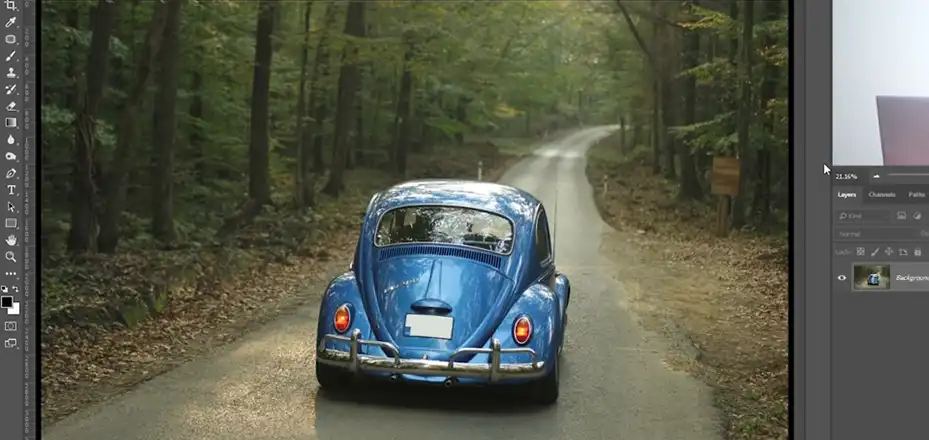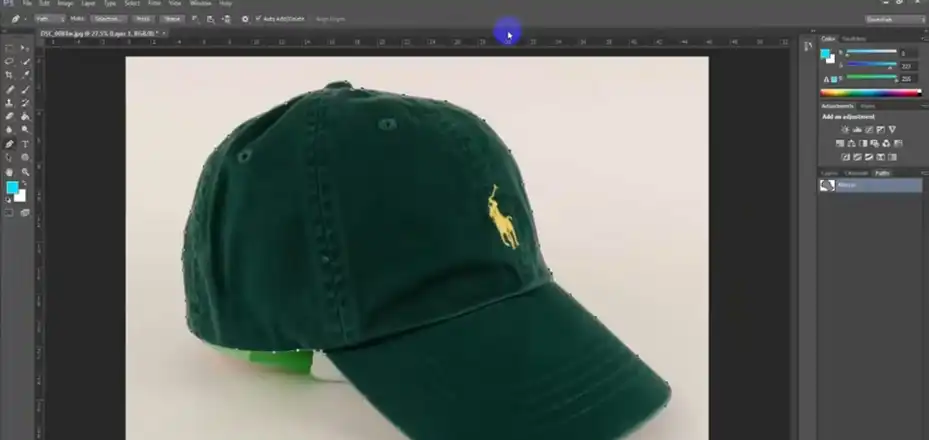Becoming a clipping path expert was a challenging journey for me. I was always passionate about digital art, but learning this specific skill took tons of practice. When I started, clipping complex images seemed impossible. The intricacies overwhelmed me. But I didn’t let that stop my ambition.
But for those willing to put in the time and effort, clipping path services can become a rewarding and sought-after offering. If you’re up for the challenge, these steps will help guide you on the journey to developing professional-level clipping skills. Today I am here to share the route that I followed to become a professional in this industry. So if you are willing to be a part of the industry, read the article and be with me till the end.

Learn the Basics
When first getting started with clipping paths, it’s crucial to build a solid foundation in Photoshop and Illustrator. These programs provide all the central tools and features needed to perform clipping work.
Getting very comfortable with the ins and outs of Photoshop and Illustrator is priority number one. Read through manuals, watch detailed tutorials, and use the programs extensively to become intimately familiar with them. Learn keyboard shortcuts which will speed up workflows tremendously. Learning about every selection tool, masking option, and pen feature available gives you a strong clipping base.
Be sure to practice all the essential skills like making selections, applying masks, and working with pen tools. For selections, use marquee, lasso, and quick selection tools then refine the edges meticulously. Try out using layer masks, vector masks, and channel masks for non-destructive editing. Master the pen tool inside and out, since tracing precise paths relies heavily on it. Trace around objects with varied edges and textures so you become adept at controlling the pen tool.
Develop Image Editing Knowledge
While clipping paths are focused on extracting subjects from backgrounds, image editing knowledge is still crucial. Images often require color correction, enhancement, and compositing along with the clipping path task.
Take time to study concepts like color correction using levels, curves, and hue/saturation adjustments to get the most out of images before clipping them. Learn dodge, burn, clone stamp, and healing tools for flawless retouching. Know about compositing by combining images convincingly, using blending modes, masks, and transformations to insert elements into new backgrounds.
Cultivate an eye for what improvements an image needs even before you begin the clipping process. Evaluate the lighting, color, and tone objectively. Determine any adjustments that will lead to a more striking and appealing final image after clipping the background away.
Get Extensive Practice
It’s said that mastery takes 10,000 hours of practice. Clipping paths are no different. Becoming an expert-level clipper requires working diligently on hundreds of varied images to build proficiency. The more images you can get hands-on practice with, the faster and more adept your skills will become.
Seek out a wide variety of photos to practice your clipping on. Product shots, portraits, natural landscapes, intricate textures, fur, hair, glass, reflections – anything that poses unique challenges. The more diversity you encounter, the better you will become at handling whatever image gets thrown your way. Here are a few things that you can do –
- Do daily clipping exercises like working on a single image for 20 minutes.
- Take on clipping test assignments to work on new image samples.
- Participate in online clipping challenges and competitions.
- Create clipping recreations of existing images to problem solve.
- Work on client assignments with tight deadlines to build speed.
Always remember that patience and persistence are vital. Clipping paths demand time and effort to complete with care. As you gain experience, you will naturally clip images faster without sacrificing quality. Expert clippers can remove backgrounds cleanly in just minutes. Aim to clip at least 5-10 images per hour, increasing your speed as skills improve. Keep at it and soon you’ll achieve expert-level efficiency.
Focus on Details and Precision
Creating quality clipping paths relies heavily on your eye for details. Train yourself to spot the tiniest imperfections in your clipped paths.
Carefully check all path outlines, zooming in close and panning along the edges to catch any small gaps, jagged lines, or remnants of the background. Paths should perfectly silhouette the main subject with no traces left behind.
Refuse to settle for paths that seem “good enough.” Use path editing tools to smooth points, redraw tricky spots, and adjust outlines until all imperfections are resolved. Aim for paths that appear to belong seamlessly within the image.
Stay Updated
Learning is never complete, even once you know the basics in and out. Ongoing study and improvement are key for honing skills over time.
Adobe releases new versions of Photoshop and Illustrator frequently, with handy updates to select and mask workflows, pen tools, and other clipping features. Take advantage of innovations that can boost your efficiency and enhance results. Here are the things that can you do to keep yourself updated –
Here are some ways to stay updated:
- Watch new Photoshop tutorial videos as they get released. Follow clipping experts on YouTube.
- Read blogs and forums regularly to learn new tips and tricks. Resources like Photoshop Cafe have regular updates.
- Join communities like Reddit’s Photoshop channel to exchange ideas and feedback.
- Follow Adobe’s feature updates and blog for new versions and tools. Sign up for their release notes.
- Attend conferences like Adobe MAX that offer insights into new features and workflows.
- Follow Photoshop artists on social media to learn how they use new tools and features.
- Experiment with new Photoshop beta updates yourself to test drive new capabilities.
- Subscribe to digital publications like Photoshop User magazine that share the latest news and expert techniques in every issue.
Continue expanding knowledge through online tutorials and blogs from fellow pro clippers. Learn new shortcuts, troubleshooting advice, and tips for tackling particularly challenging images from the experts.
Showcasing Your Skills
A portfolio allows you to exhibit your clipping path skills prominently. Use it to establish your expertise with potential clients.
Build a collection of 10-15 images highlighting your finest clipping work across a variety of subjects. Include before and after views to draw attention to the dramatic improvements you achieved.
Post portfolio images on a website to strut your stuff and attract prospective clients. Provide samples to potential clients showcasing exactly what you can deliver. Offer to clip a sample image for free to win over new business.
Get Feedback and Critiques
Another key to ongoing growth is receiving objective critiques from experienced clipping pros. Welcome constructive criticism as an opportunity to improve.
Ask fellow expert clippers to review your paths for any flaws you may have overlooked. A second set of eyes can catch small imperfections. Consider critiques a chance to get even better rather than a personal attack.
Stay open to input and keep aiming higher. Even the best clippers still have areas where they can grow. Use feedback to address weak spots and provide higher quality work.
Consider Getting Certified
Although optional, getting certified in Photoshop can help validate your skills as a clipping path expert. There are a few reputable certification programs to consider:
Adobe Certified Associate (ACA)
The Adobe Certified Associate certification focuses on entry-level skills in Photoshop. To get ACA certified, you need to pass the Photoshop ACA exam which tests your understanding of the workspace, layers, selections, masks, and basic retouching. While an entry-level certification, it validates fundamental Photoshop skills.
Adobe Certified Expert (ACE)
The Adobe Certified Expert credential is an advanced certification that involves passing multiple exams in Photoshop, Illustrator, and other Adobe programs. The Photoshop ACE exam goes deeper into complex masking, compositing, color correction, and workflow. Earning the ACE certification exhibits Photoshop mastery.
Certiport
Certiport offers certifications like Photoshop Master CIW and Adobe Certified Professional. The exams test real-world skills in managing advanced workflows, 3D and analysis tools, scripting, and other areas. These certifications are recognized by academic institutions and corporations.
CLIPP
The Certified Listening and Influence Path Professional (CLIPP) focuses exclusively on clipping path skills. It involves both written exams and practical tests to assess clipping techniques, color management, and editing standards. CLIPP is highly regarded in the clipping industry.
Certification provides structured learning goals to strengthen your skills. It also exhibits professional credibility that can help secure jobs and clients. Consider learning paths aligned with the certification exams. With diligent preparation, you can validate your clipping expertise through accredited programs.
Establishing Yourself as a Pro
With rigorous training under your belt, begin confidently offering your clipping services to clients. Create a professional website showcasing your portfolio. Reach out to agencies and companies in need of clipping work.
Quickly and reliably deliver projects for clients with immaculate results. Charge rates around $0.49 per image reflecting your specialized expertise. Be ready to explain your niche skills clipping complex product shots and tricky images.
Welcome referrals and repeat business thanks to your exceptional service. Stay humble and open to ongoing learning while taking pride in your hard-earned clipping mastery.
Becoming a clipping path expert allows you to offer a highly sought-after graphic design service. But it requires diligent practice to master Photoshop’s complex selection tools and develop a refined eye that spots the most subtle of flaws. Continually refine your craft. Build a reputation for quality work that wows clients. With a dedication to honing your skills, you can become a go-to provider of specialized clipping services.
End Notes
My advice? start small, but dream big. With the right dedication, anyone can achieve expertise. Build your skills step-by-step. Stay patient, and pay attention to details. Use setbacks as lessons. And remember – becoming a pro takes time. But the satisfaction of perfecting your craft makes every effort worthwhile. So keep practicing, and stay determined. You’ll get there. Like me, you can master this unique skill and establish yourself as a clipping path expert.

